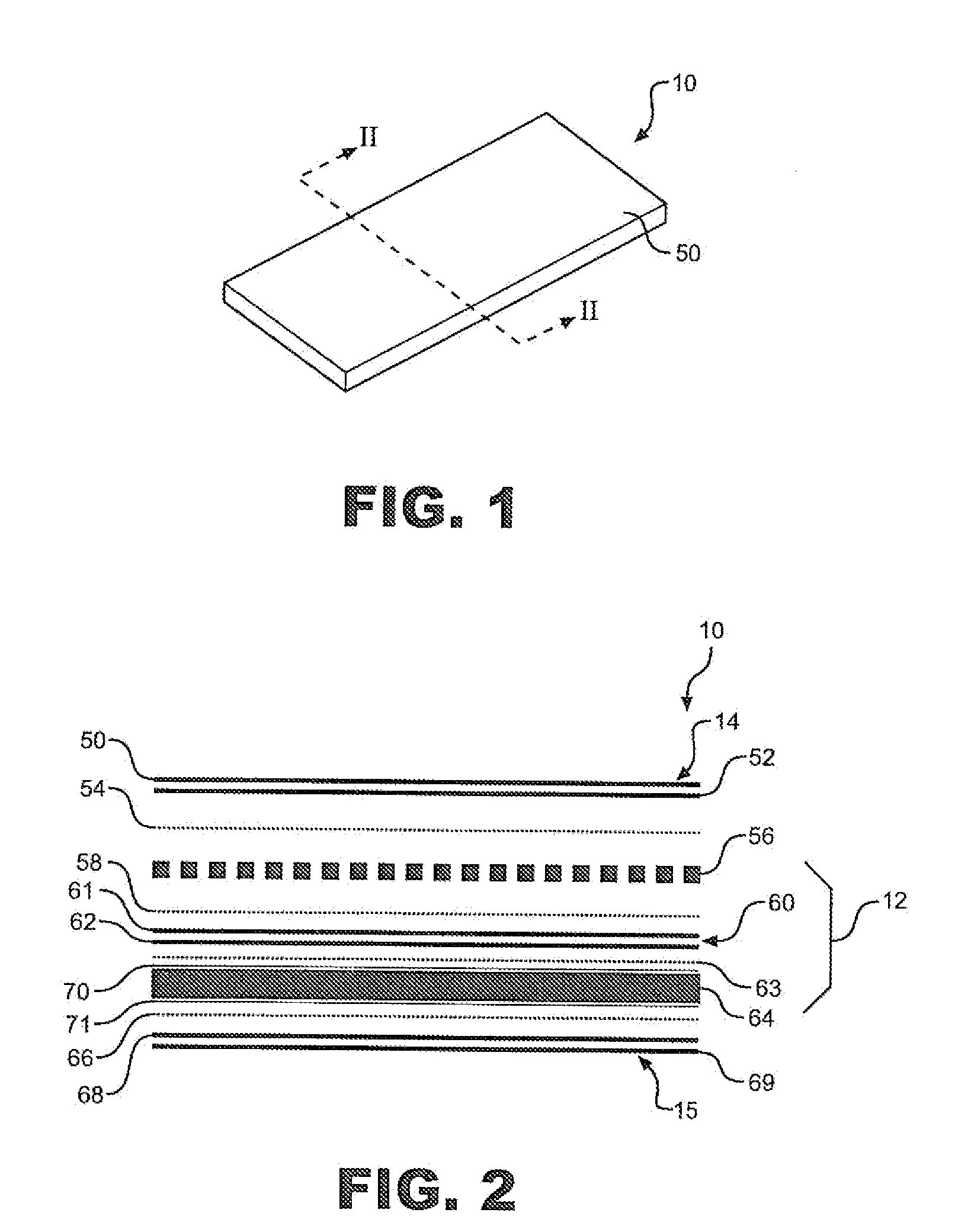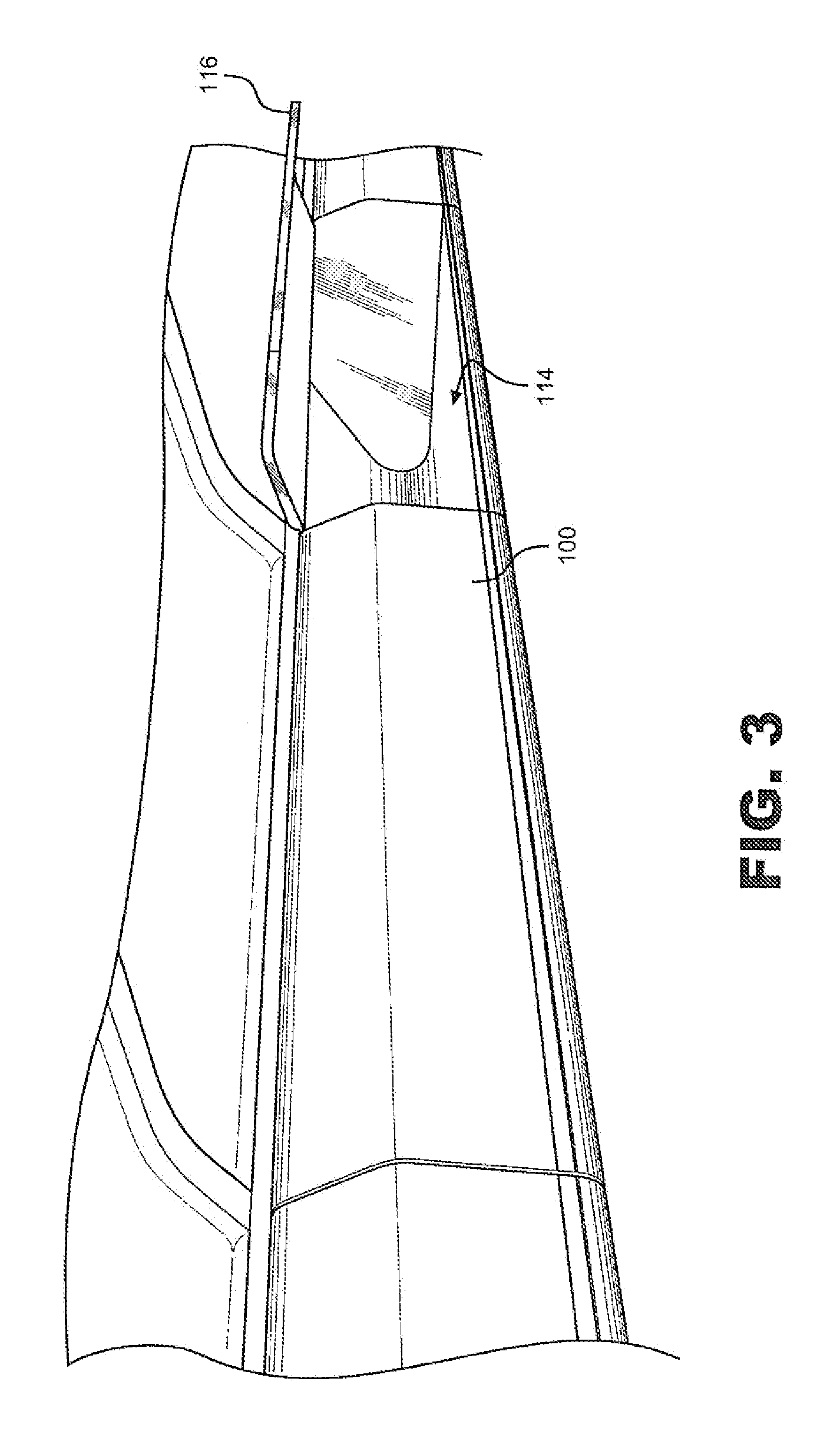Lightweight Blast Mitigating Composite Panel
a composite panel and light weight technology, applied in the field of protective panels, can solve the problems of increasing terrorist threats to public transportation, limiting the ability of uhmwpe fibers to delocalize, etc., and achieve the effects of increasing dynamic stiffness, high strength, and increasing adhesion
- Summary
- Abstract
- Description
- Claims
- Application Information
AI Technical Summary
Benefits of technology
Problems solved by technology
Method used
Image
Examples
Embodiment Construction
[0016]With initial reference to FIG. 1, a lightweight blast mitigating composite panel is generally indicated at 10. As will be detailed more fully below, panel 10 is constructed in a manner which provides for enhanced blast absorption, suppression and mitigation capabilities verses known composite panels employed for similar purposes. In general, panel 10 has various potential uses, including military, law enforcement, transportation and storm management fields.
[0017]Turning to FIG. 2, panel 10 incorporates ultra high molecular weight polyethylene (UHMWPE) fibers within a matrix to form a core 12 that is subsequently encased by first and second outer shells indicated at 14 and 15. Core 12 and shells 14 and 15 may be further surrounded by a protective sleeve or case (not shown).
[0018]More specifically, as depicted in FIG. 2, composite panel 10 includes outer shell 14 which is preferably comprised of reinforcing layers 50 and 52, a first flame-resistant adhesive layer 54, an intermed...
PUM
| Property | Measurement | Unit |
|---|---|---|
| Thickness | aaaaa | aaaaa |
| Electrical resistance | aaaaa | aaaaa |
| Molecular weight | aaaaa | aaaaa |
Abstract
Description
Claims
Application Information
 Login to View More
Login to View More - R&D
- Intellectual Property
- Life Sciences
- Materials
- Tech Scout
- Unparalleled Data Quality
- Higher Quality Content
- 60% Fewer Hallucinations
Browse by: Latest US Patents, China's latest patents, Technical Efficacy Thesaurus, Application Domain, Technology Topic, Popular Technical Reports.
© 2025 PatSnap. All rights reserved.Legal|Privacy policy|Modern Slavery Act Transparency Statement|Sitemap|About US| Contact US: help@patsnap.com



